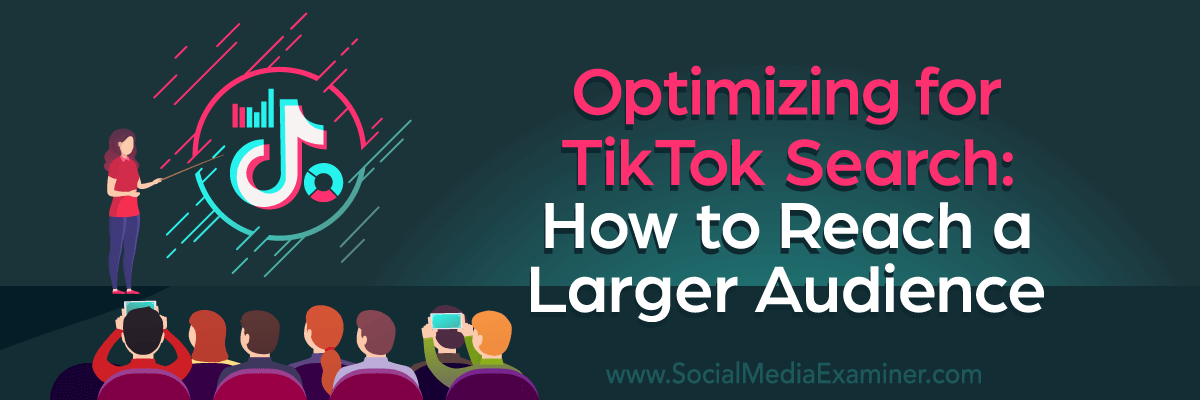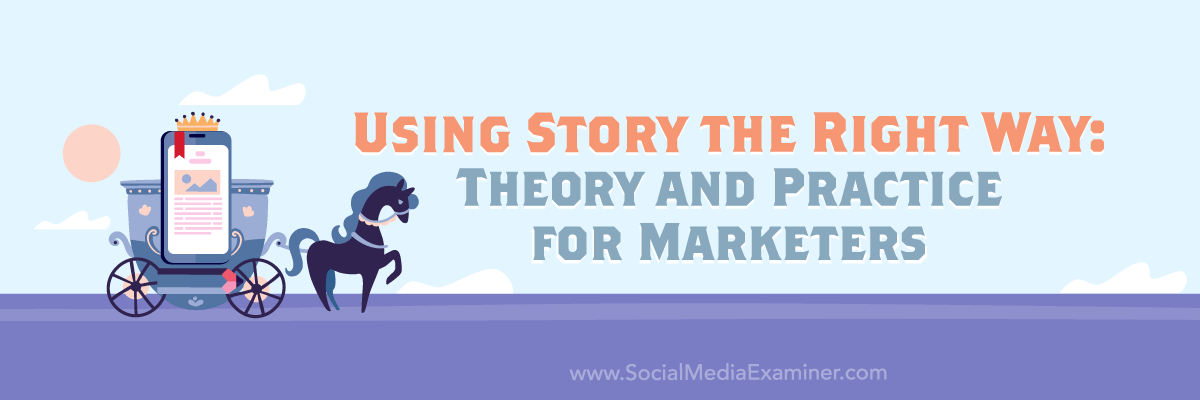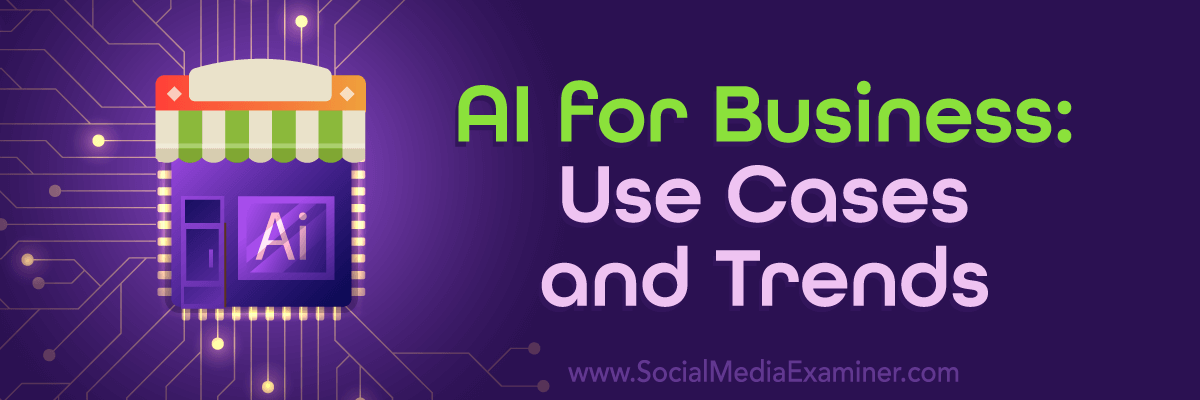Today's Guide to the Marketing Jungle from Social Media Examiner... | Presented by |  |
It's Homemade 🥖 Bread Day, Alluser! Is there anyone who doesn't enjoy the smell of baking bread?
In today's edition:
-
Today's 👉 Tip of the Day is for marketing strategy
-
How to make your content show up in TikTok 🔎 search results
-
📖🎬🎧 Crafting narrative stories that sell
-
15 ways ⚙️ AI can help you work smarter and faster
-
More tools and AI features for ✅ lead generation ads on Facebook and Instagram
-
📣 Snap announced new AR development and collaboration tools
-
Videos on X now have 🖱️👆 clickable timestamps
-
💢 Copyright claims notification just got easier to deal with
-
YouTube AI is enhancing 💬 comments for channel moderators and viewers
-
🤳 Instagram expanded Reels ✂️ editing tools
-
🧵 Threads users get two anticipated updates
-
YouTube addresses future 🤖 AI content
-
Instagram is 🌄 sunsetting 📗 Guides
-
Instagram rolls out new Reels 📊 metrics, 🤳 photo filters, and more
-
Instagram 👫 Close Friends filters for posts and Reels
-
💢 "Hashtags" come to 🧵 Threads
-
New TikTok ads 📈 measurement solutions
-
📰 News consumption on TikTok continues to grow
-
YouTube AI-generated 🎶 soundtracks for Shorts

Is your marketing strategy working? Is something not quite right with your content, but you can't put your finger on it? Here's a simple rundown to help.
3 Ways to Focus Your Marketing Strategy
Niche-Focused Marketing Strategy: This involves focusing on consistently creating content for a specific industry. For example, if your niche is fitness, you may create content about proper form, workouts, and protein. This strategy works well on Instagram, TikTok, and YouTube.
Audience-Focused Marketing Strategy: With this approach, you focus on creating content for a specific customer or client persona. For instance, you may aim to inspire college students to balance school, work, and self-care through your content. This strategy works well on YouTube.
Identity-Focused Marketing Strategy: Typically used by lifestyle creators this strategy can also serve solopreneurs. This involves attracting people who relate to you and your unique traits, such as your relationship status, gender, culture, location, hair type, career path, and other identity markers that play a role. This strategy works well on TikTok.
Today's tip is inspired by Millie Adrian, a featured speaker at Social Media Marketing World. Source: Instagram

It's easy to dismiss TikTok as just another social app. But you'd be missing out on a huge opportunity because TikTok now captures 25% of active internet users every month. That's 1 billion people.
TikTok is also becoming the go-to place for people to search and discover new content. It's essentially a powerful search engine in video form. TikTok's algorithm quickly learns each user's interests and serves up an endless stream of personalized content.
It's becoming much easier for brands to reach their target audience when consumers are looking for a specific product or solution.
How to Create Content That Shows Up in TikTok Search Results
Follow this step-by-step guide to learn how to structure your TikTok videos for maximum visibility and engagement.
Define Your Content Pillars
The foundation of an effective TikTok strategy is having clearly defined content pillars. Think of pillars as the bumpers in a bowling alley—they keep you on track to hit your target.
Without intentional pillars, it's easy to veer into simply promoting your product over and over. This quickly becomes boring for viewers, just like that one person at a party who only talks about themselves.
Instead, put in the work upfront to identify engaging themes and topics to build your content around.
Start by conducting research into your target audience's interests and search intent on TikTok. Look beyond your product to identify the wider concerns your audience cares about. Use TikTok's search bar and suggestion tools to find recurring themes around keywords and hashtags.
Then develop recurring content pillars that provide value around those interests. This will form the framework for the types of videos you create.
With your pillars defined, your content stays focused on resonating with your audience. This lays the groundwork for better video performance down the line.
Conduct Research to Inform Your TikTok Video Strategy
Now that you know your overarching themes, conduct more specific research to identify video topics and angles within those pillars.
There are several ways to uncover exactly what viewers are searching for on TikTok:
Search directly in TikTok. Enter target keywords into the TikTok search bar and pay attention to the top videos in your niche. Look for trends in topics and approaches. You don't want to copy these videos, but use them for inspiration on content that performs well.
Review "Others Searched For" suggestions. This section under the main search results provides a wealth of data on related keywords people are searching for. Use these search suggestions to find adjacent topics to create videos around.
Check TikTok's Business Suite. If you have a TikTok business account, the Business Suite provides free insights into trending hashtags, keywords, and top videos from other businesses. This info can help inform your content calendar.
Analyze what's resonating across these sources, then brainstorm creative ways you can add value while differentiating your brand. Share your unique perspective or geographic location. Fill noticeable content gaps.
For example, education brand RMIT Training researched terms like "international student Melbourne" and noticed people were interested in local activities too. Capitalizing on Australia's wildlife, they created a video with a student showcasing koalas and kangaroos near Melbourne. This specific angle helped the video generate 1.9 million views.
Craft Your TikTok Video for Maximum Discoverability
With your research complete, it's time to create videos optimized for engagement and sharing. Use these techniques to build your video content for success on TikTok:
Lead with a strong hook that grabs attention in the first 3–5 seconds by clearly stating your topic or sharing an exciting fact. Include keywords in your hook that describe what the video is about.
Deliver value in the body. This is where you provide useful tips, insights, or entertainment to the viewer. Build trust by offering true value. If you're sharing a tips list, build intrigue by counting backward, down to the #1 tip.
End with a clear call-to-action (CTA). About half your videos should include a CTA prompting the viewer's next step. For example, "Follow for more tips" or "Save this video." Not every video needs a hard sell.
Keep it concise, and strive for videos that are 30–60 seconds long. Long enough to teach, inspire, or entertain but tight enough to keep viewers engaged until the end. Why? Videos that retain viewers are more likely to be promoted by TikTok's algorithm.
By following this formula, you grab attention, provide value, prompt engagement, and retain viewership. These elements are proven to boost video performance.
Optimize TikTok Video Details for Maximum Discoverability
With your video created, optimize all its metadata to maximize visibility and engagement.
Write an engaging title and add a catchy title overlay at the start of your video. Incorporate keywords that describe your content and entice viewers. Display for 4–5 seconds so viewers have time to read it.
The written caption below your video provides another opportunity to summarize your content for TikTok's algorithm. Use keywords, emojis, and strategic capitalization to make it compelling.
You also want to add 4–6 hashtags relevant to your video topic and niche, one of which should be a branded hashtag. Be sure to lead with the most important keyword.
Add closed captioning by enabling TikTok's auto-captions or add your own subtitles. This improves accessibility and visibility.
Optimizing these details signals to TikTok what your video is about. It also informs potential viewers of your content.
Today's advice is provided with insights from Melissa Laurie, a featured speaker at Social Media Marketing World.

Are You Feeling Overwhelmed by Rapid Change?
In our most recent study, 62% of marketers said they're feeling overwhelmed by the current rate of change. And nearly half (47%) feel like their marketing is in a state of disruption.
Marketing is quickly evolving! The tools we use are changing. And of course, AI is at the heart of it all.
It's more important than ever to elevate your marketing skills. That's where the 11th Annual Social Media Marketing World can help. Attend to discover what's working now.
I don't want to feel overwhelmed anymore.

Storytelling is a powerful tool for marketers. When done right, storytelling makes your content marketing more effective for several reasons.
Why Narrative Storytelling Works
Good stories help consumers process information and filter what's important from extraneous details, transmitting key info to your audience.
Good stories influence opinions and behavior, nudging customers toward decisions like signing up for your email list or making a purchase.
Good stories quickly get people's attention in an overloaded media landscape.
With these benefits, why doesn't every brand master storytelling?
Why Storytelling Sometimes Falls Flat
Two main problems ruin narrative marketing:
First, is a lack of clarity. Without a definitive beginning, middle, and end that moves audiences through a narrative arc, they get lost.
Second, is that brands mistakenly make themselves the hero of their own story. For maximum impact, customers should be the protagonist. Your brand should take the role of the wiser guide.
When brands don't stick to proven storytelling conventions, their narratives lack impact. Avoid these pitfalls by following a proven formula.
Crafting Compelling Narrative Stories for Marketing
The most engaging stories in film or literature adhere to a simple seven-part formula. When you adapt each element for narrative marketing, your tales will have clarity and emotional resonance.
Here is how to tailor the established Hollywood formula to your brand messaging:
The Hero: Place your customer in this role. They have a goal they want to achieve or a problem they need to solve.
The Problem: Outline the major obstacle or pain point standing in your customer's way.
The Guide: Your brand takes this role. You offer knowledge, tools, and expertise to help customers overcome challenges.
The Offer: Present your product or service as the solution to the customer's problem.
Call to Action: Urge customers to take the next step, whether signing up for a free trial or making a purchase.
Success: Describe how great customers' lives will be after embracing your solution and reaching their goals.
Failure: Warn about outcomes if customers don't take action. These could be inconveniences, lost opportunities, etc.
With this adapted formula, you have a blueprint for telling compelling brand stories with customers as the heroes.
Executing a Cohesive Brand Narrative
You don't need to cram every storytelling element into each piece of content. But regularly incorporate parts of the formula into your messaging.
For example:
- Blog posts can describe the problem and solution in detail.
- Social media posts can highlight success scenarios.
- Email sequences can warn against inaction.
Emphasize the problem element frequently since that resonates most with audiences.
Over time, different pieces will come together into a cohesive narrative arc. Set up tracking to see which storytelling components perform best. Double down on those high-performing aspects.
Tips for Uncovering Your Unique Brand Story
If you're unsure what story to tell, start by identifying target customer needs and motivations. Ask:
Why do customers buy from you? What's their goal?
What do they say after making a purchase?
The first questions reveal their goals and problems. The second provides the end of their story—how you helped them succeed.
Next, if you serve multiple segments, brainstorm different customer personas and their narratives.
Finally, think about your brand's role. As the guide, what solutions, expertise, and values do you offer to help customers achieve success?
Then, just follow the storytelling formula to craft compelling tales.
Today's advice is provided with insights from Dr. J.J. Peterson, a featured speaker at Social Media Marketing World.

Artificial intelligence (AI) is transforming digital marketing. Smart tools can now analyze huge amounts of data, generate new content, and even answer questions. As a social media marketer, you have an exciting opportunity to take advantage of AI to work faster and smarter.
5 Ways Marketers Can Apply AI Tools
Extraction: Finding Relevant Data
The first way to tap into artificial intelligence is by using it for extraction. This means sifting through existing content to pull out specific pieces of data.
Analyze Social Media for Leads
For example, you could use an AI tool to analyze hundreds of thousands of tweets or other social media posts. The AI would extract relevant Twitter handles, Facebook profiles, and other user data to build a list of leads. This saves you the grunt work of manually going through each social media profile to find potential customers. The AI handles the data gathering for you.
Discover Keywords in Blogs
Another example is using AI to analyze blogs and articles related to your industry. The AI can rapidly read thousands of blog posts and highlight the most common keywords and topics. This gives you invaluable insight into popular search terms and discussion themes to incorporate into your own content. No more guessing which keywords you should target—let the AI uncover them for you based on actual usage across the web.
Listen to Podcasts for Brand Mentions
Finally, AI tools can listen to podcast episodes and pick out specific brand mentions or references to a person. For example, you could use this to monitor when your brand gets brought up by influencers and podcasters. The AI eliminates the need to listen to hundreds of hours of audio content. It serves you the relevant clips on a silver platter.
Summarization: Condensing Key Points
Another superpower of AI is summarization. This condenses long-form content down to key takeaways.
Get Insights From Podcasts and Videos
A great example is using AI to get the main discussion points and insights from podcasts, videos, and webinars. Rather than spending an hour listening to a podcast, you can get the top highlights in seconds in a text summary. This helps you quickly gather nuggets of wisdom from industry thought leaders without chewing through hours of content. Plus, you can scan for topics and mentions relevant to your brand.
Streamline Meeting Notes Taking
AI summarization also works for meetings. Instead of having someone furiously take notes, you can record the meeting and run the audio through summarization software. It will condense a long back-and-forth conversation into a digestible summary. You can even ask it to highlight key action items. This makes it easy to find the needle-in-the-haystack tasks buried in a long, meandering meeting.
Monitor Customer Service Trends
Customer service teams can use AI summarization to analyze calls and spotlight trends. For example, the AI could detect spikes in questions about a certain product or complaints about a recent change. This gives management clear insights into pain points and topics that need addressing. Otherwise, these trends could get lost in hundreds of hours of customer conversations.
Rewriting: Restyling With AI
AI rewriting takes summarization one step further. While summarization condenses information, rewriting delivers that same information in a completely new style.
Adjust Tone and Formatting
For example, you could rewrite a very formal email to use more casual, conversational language for a friendlier tone. Or you could take a short social media post and rewrite it as a long-form blog article with more detail. The key benefit is the AI handles the grunt work of putting the ideas into new words and formats. This makes it easy to tailor messages for different mediums and audiences without starting from scratch.
Repurpose Content
AI rewriting is also great for repurposing existing content. For example, you could take a popular social media post and rewrite it as a blog post, video script, email newsletter, or other formats. This multiplication of content takes your best-performing messages and gives them new life across multiple channels. The AI does the heavy lifting while you simply guide it on style and formatting.
Refresh Old Content
Finally, rewriting can revive and refresh old evergreen content. Simply feed your AI assistant a blog post from a few years ago and ask it to rewrite the post in a modern voice. The AI will carefully rephrase and update the post to make it feel current. This saves you from overhauling all your content manually every time you want to give it a facelift.
Classification: Organizing Content
AI also provides effective classification capabilities. This allows you to automatically sort vast amounts of content into topics and categories.
Sentiment Analysis for Social Media
For example, you can use AI tools to classify the sentiment of social media mentions of your brand as positive, negative, or neutral. You could also categorize social media posts by the intent behind them such as feedback, questions, or reviews. This gives you a helpful bird's eye view of the social media landscape. You can instantly see where the greatest challenges or opportunities lie with your brand's social reputation.
Categorize Support Queries
Customer support teams can use AI classification to analyze incoming support tickets and automatically categorize them by topic and urgency. This results in faster response times. Plus, it gives support managers insight into the most common customer queries they should consider addressing proactively.
Tag Content by Topic
Marketers can also use AI classification for tagging content. For example, auto-tagging blog posts with relevant topics makes it easier to organize them into categories. The AI takes care of the grunt work instead of editors needing to manually tag every piece of content.
Question-Answering: AI Assistance
The most sci-fi domain of AI is question-answering. This is where you can simply ask the AI a question and get a helpful answer in natural language.
Conversational Search
Question-answering AI vastly improves search experiences. Instead of hunting through lists of links, you can get a direct answer to queries like "What was the highest-grossing movie in 1995?" This makes AI assistants feel more conversational and human.
AI Support Agents
Some companies are already using question-answering AI to respond to customer service FAQs. The AI handles commonly asked questions while directing humans to more nuanced queries. With some training on your products and tone, such AI could act as a supplemental support agent scaling your team.
Quick Answers for Busy Marketers
AI assistants like ChatGPT can also provide on-demand support for busy marketers. While it shouldn't fully replace human intelligence, question-answering AI can offer quick help on things like content strategy outlines, social media trend explanations, basic business advice, and marketing task to-do lists. This provides casual assistance whenever you need a second opinion or an extra set of hands.
Adding AI to Your Daily Workflow
If you want to add artificial intelligence to your workflow, you'll need to become a prompt engineer. Prompt engineers understand how to write prompts that get the best possible output from machine intelligence tools.
To start your training, we'll focus on ChatGPT, which is currently one of the most sophisticated and widely used generative AI mechanisms. Other AIs will respond to prompts slightly differently because each has its own secret sauce.
There are four key elements to an effective prompt:
-
Role. Tell the AI who it should impersonate: an expert, a customer, an ordinary Jane or Joe.
-
Task. Tell the AI what content you want it to create. Give detailed requirements like format, style, word count, and any calls to action you want to include.
-
Background. Give the AI all of the data it needs to create the content, including information about your audience, positioning, and aims.
-
Execute. Ask the AI to start creating.
AI doesn't replace human intelligence and creativity—it enhances it. Approach these tools as a helpful assistant, not an automatic solution. By combining AI's strengths with your marketing expertise, you can accelerate content production, data analysis, and social conversations. This frees up more time and energy to do what matters most—connecting with real people.
Today's advice is provided with insights from Christopher S. Penn, a featured speaker at Social Media Marketing World.

🗞 Meta Ads: Meta announced new ad tools and AI capabilities to help businesses generate more leads across Facebook, Instagram, and WhatsApp. New options include expanding lead campaign objectives to more platforms, adding Q&A flows and coupons to Instagram ads, testing multi-business info forms to capture leads, and enabling businesses to call customers directly via Facebook with verified info. AI advancements will enable full automation of lead gen campaigns and instant form generation from website content. Source: Meta
🗞 Snapchat AR Tools: Snap Inc. unveiled new AR development tools at its annual Lens Fest event, including Lens Studio 5.0 beta which loads projects 18x faster, incorporates AI through a ChatGPT integration, has a quick viral lens generator, and enables team collaboration through version control. These advances aim to empower the over 330,000 developers building lenses for Snapchat's 3.5 million lenses, which were viewed 3 trillion times last year. Beyond new tools, Snap is supporting developer business models by expanding digital goods, paid AR lens features, and promoting lenses through a dedicated section in Lens Explorer. Overall, Snap is providing innovative capabilities and support to fuel the next generation of AR experiences. Source: Snap
🗞 Video Timestamps on X: Timestamps allow creators to link to specific moments in a video by referencing the time in a post, helping provide context, organization, and easier navigation for viewers. On iOS, timestamps in the formats x:xx, xx:xx, x:xx:xx, or xx:xx:xx become clickable links when posted with a single video, letting users tap to jump to that spot in the video. Timestamps can be included in posts from iOS, Android, and the web, but are currently only clickable on iOS, with Android and web support coming soon. Up to 50 timestamps can be used per post. Overall, timestamps make videos more user-friendly by letting creators guide viewers to key moments. Source: X
🗞 YouTube Copyright Claims: Over the next few weeks, YouTube will be rolling out improvements to copyright claim notification emails. These improvements include a new revamped UI that is more user-friendly and new email send logic. If a video receives multiple claims, creators will receive a single consolidated email with all the claim information instead of multiple emails. In addition, if creators have access to YouTube's Creator music, the email will show options to explore free tracks, buy a license from Creator music, or share revenue, if those options could help lift the restriction from the audio claim. Source: YouTube Creator Insider
🗞 YouTube Generative AI Experiments: YouTube is testing some small experiments using generative AI to enhance the viewing experience. First, to help viewers follow large comment discussions, YouTube is experimenting with using AI to summarize key themes from comments on long videos. Creators can use these to quickly jump into discussions or get video ideas based on audience comments. The comment summaries use only published comments, not held, blocked, or deleted comments. Creators can still moderate as needed. Second, a conversational AI tool may appear on some video watch pages to let viewers ask questions and get video recommendations without leaving the page. These are early experiments and may not be widely visible yet. Source: YouTube Creator Insider
🗞 Instagram Reels Editing Tools: The platform announced the rollout of updated native editing tools that let users scale, crop, and rotate individual clips; easily undo and redo edits; and more easily find tools such as Voiceover. Source: Instagram
🗞 Expanded User Controls for Threads: Two heavily anticipated updates are rolling out to Threads users. First, is control over whether your Threads posts appear on Instagram and Facebook. Second, you can now delete your Threads profile without deleting your Instagram account. Source: Adam Mosseri via Threads
🗞 AI Content on YouTube: YouTube announced it will introduce new measures to inform viewers when content contains synthetically generated or altered material, particularly around sensitive topics. This includes requiring creators to disclose when videos contain realistic altered or AI-generated content, adding labels to describe altered/synthetic content, and giving individuals the ability to request the takedown of AI-generated content using their image or voice without consent. YouTube stated that it will also apply AI technology to improve content moderation, using machine learning to more quickly identify emerging abuse. The company emphasized its responsible approach to developing AI tools, including partnering with the music industry and incorporating protections to prevent harmful AI-generated content. Source: YouTube
🗞 Instagram Guides: A change to the platform's Guides feature originally spotted by App researcher Alessandro Paluzzi has been confirmed by Instagram. The platform is sunsetting the Guides feature and converting all existing Guides into private saved collections. Users can access their saved collections via 'Saved' in the profiles settings tab. Source: The Verge
🗞 Instagram Reels Metrics and More: Meta's new Replays metric for Facebook and Instagram tracks when users replay a Reel multiple times. In addition, Reels Plays now include initial views of a Reel and Replays. Other updates to Reels include 25 new photo filters, 10 new English text-to-speech voices, 6 new text fonts and styles available in hundreds of languages, and a new media clip hub. Source: Instagram
🗞 Instagram Close Friends Lists: Instagram introduced a new feature that allows users to limit who can view their posts and Reels to just their "close friends" list. Previously, posts were either public or limited to followers. The close friends option adds more privacy, letting users share content with only their closest connections on the app. Posts limited to close friends will display a green star icon. Source: The Verge
🗞 Threads Hashtags: Threads users will soon be able to add a single tag to their posts by typing "#" followed by keywords. The tags will not display the "#" symbol but will appear as clickable blue links. Clicking on a tag will show other posts using the same tag, allowing users to explore content by topic or interest. The feature is initially being tested in Australia. Source: Mark Zuckerberg via Threads
🗞 TikTok Ads Measurement: TikTok has introduced a new measurement framework called Self-Attributing Network (SAN) integration to give app advertisers a more comprehensive view of how TikTok ads drive conversions beyond the limitations of click-based attribution models. SAN integration works with mobile measurement partners (MMPs) to capture additional conversions influenced by TikTok video views and clicks that MMPs miss. TikTok has also introduced Engaged View-Through Attribution (EVTA) to measure conversions driven by video views of 6+ seconds. Together, SAN and EVTA provide a clearer picture of TikTok's impact on conversions. They allow for custom attribution windows and capture engagements beyond clicks and last-touch attribution to optimize campaign performance. The goal is to better demonstrate TikTok's influence in multi-touch customer journeys. Source: TikTok
🗞 News Views on TikTok: News consumption on TikTok has grown rapidly among U.S. adults over the past few years. In 2023, 14% of U.S. adults report regularly getting news on TikTok, quadrupling from just 3% in 2020. TikTok news use is especially common among young adults ages 18–29, 32% of whom get news there. Among TikTok users overall, 43% now regularly get news on the platform, up from 33% in 2022. Still, news consumption remains higher on other platforms like X, though the gap is narrowing. TikTok's growth as a news source contrasts with declines in news use for many other social media sites. The data indicates TikTok is emerging as a news destination, particularly among young demographics in the U.S. Source: Pew Research
🗞 YouTube Dream Track: Facebook is testing a new experimental feature for Shorts called Dream Track that uses AI to generate soundtracks in the voices of certain musical artists. A small group of English-speaking creators in the U.S. can access Dream Track to add AI-generated vocals from nine artists like John Legend, Sia, Charlie Puth, and Demi Lovato to their Shorts. Any creator can then remix Shorts using these Dream Track soundtracks as long as Shorts and remixing are available in their region. Shorts with Dream Track will follow normal monetization policies but can't be downloaded. Viewers will know it is Dream Track content from the text labeling it as an AI artist voice and the purple+pink thumbnails. The goal is to connect musical artists and fans in a new way through Shorts. Source: YouTube
Did You Know?
Otto Frederick Rohwedder invented a machine in 1928 that both sliced and wrapped bread. Maybe we should start saying, "The best thing since sliced and wrapped bread!"

Michael Stelzner, Founder and CEO
P.S. Add
michael@socialmediaexaminer.com into your contacts list. Use Gmail?
Go here to add us as a contact.
We publish updates with links for our new posts and content from partners. Your information: Email:
tukangpostoemel@gmail.com Opted in on: 2021-09-06 17:20:47 UTC.